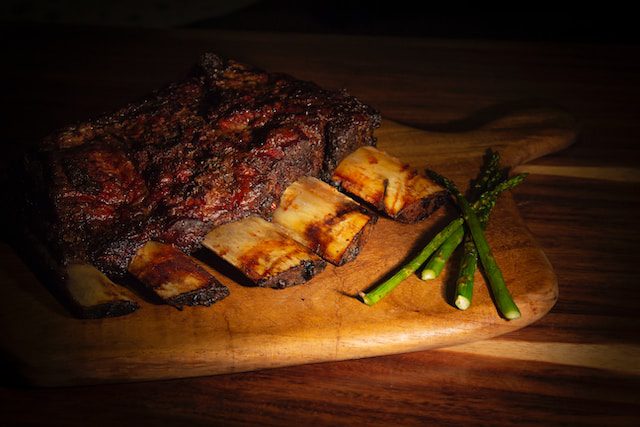
As an Amazon Associate I earn from qualifying purchases.
In this article, we will delve into the art of making bone broth using a slow cooker. Bone broth has gained popularity in recent years due to its numerous health benefits and rich, savoury flavour. By utilizing a slow cooker, you can effortlessly create a nutrient-dense broth that is both delicious and convenient to prepare. In this comprehensive guide, we will explore the step-by-step process of making bone broth in a slow cooker, including the ingredients, cooking time, and tips to enhance the flavour and nutritional value.
Benefits of Bone Broth
Bone broth is more than just a flavourful base for soups and stews; it is packed with essential nutrients and boasts various health benefits. Incorporating bone broth into your diet can provide you with numerous advantages. Here are some of the key benefits of consuming bone broth:
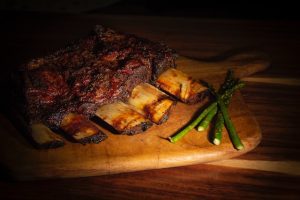
Make Bone Broth in a Slow Cooker A Nourishing and Convenient Method
Rich in Minerals:
Bone broth is a natural source of essential minerals like calcium, magnesium, and phosphorus. These minerals are important for maintaining healthy bones and teeth, supporting proper nerve function, and promoting overall health.
Gut Health:
The gelatine present in bone broth plays a crucial role in restoring and maintaining a healthy gut lining. It helps to strengthen the intestinal barrier, improving digestion, and nutrient absorption. Consuming bone broth can aid in soothing and healing the gut, especially for those with digestive issues like leaky gut syndrome.
Joint and Skin Support:
Bone broth is a fantastic source of collagen, a protein that is abundant in connective tissues, bones, and skin. Collagen provides structural support and helps maintain the health of joints and bones. Regular consumption of bone broth can contribute to joint health, reducing joint pain and promoting mobility. Additionally, collagen promotes skin elasticity, hydration, and a more youthful appearance.
Immune System Boost:
Bone broth contains amino acids such as glutamine and arginine, which support a stronger immune system. Glutamine helps enhance the function of immune cells, while arginine has been shown to stimulate immune responses. Including bone broth in your diet can help strengthen your immune system and support your body's defence against infections and illnesses.

Make Bone Broth in a Slow Cooker A Nourishing and Convenient Method for the keto diet
Comparison Table: Bone Broth vs. Other Soups/Broths
| Bone Broth | Other Soups/Broths | |
| Nutrient Density | High nutrient content due to long simmering and extraction of minerals and collagen from bones. | Nutrient content varies depending on the ingredients used and preparation methods. |
| Digestive Support | Aids in restoring gut health and improving digestion due to the presence of gelatine. | May or may not have the same level of gut-supporting properties. |
| Joint and Skin Benefits | Contains collagen that supports joint health and improves skin elasticity. | May not have the same collagen content and associated benefits. |
| Immune System Support | Provides amino acids like glutamine and arginine, which contribute to a stronger immune system. | Other soups/broths may not offer the same immune-boosting amino acids. |
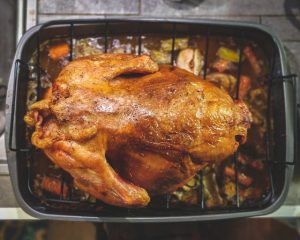
can you use cooked bones to make bone broth in a slow cooker
When comparing bone broth to other soups and broths, it stands out in terms of nutrient density and specific health benefits. Bone broth is made through a long simmering process, which allows for the extraction of minerals and collagen from the bones. This results in a higher nutrient content compared to other soups and broths. Additionally, bone broth provides unique advantages such as digestive support, joint and skin benefits, and immune system support, thanks to the presence of gelatine, collagen, and specific amino acids.
Incorporating bone broth into your diet is a simple and delicious way to reap the benefits it offers. Whether you sip it on its own, use it as a base for various recipes, or enjoy it as a comforting drink, bone broth is a nourishing addition to a healthy lifestyle.
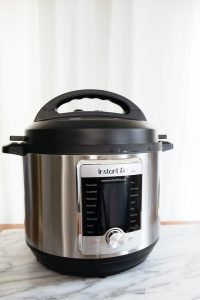
Making your own keto bone broth in a slow cooker
What are the Benefits for Taking Bone Broth on the Keto Diet?
Bone broth is a valuable addition to the keto diet due to its numerous benefits that align with the principles of this low-carb, high-fat eating plan. Incorporating bone broth into your keto diet can provide you with several advantages. Here are the key benefits of taking bone broth on the keto diet:
Supports Ketosis:
Bone broth is low in carbohydrates and sugar, making it an excellent choice for those following the keto diet. It can help you stay in a state of ketosis, where your body utilizes fat as its primary fuel source.
Enhances Electrolyte Balance:
When transitioning into ketosis, your body excretes more water and electrolytes. Bone broth is rich in essential electrolytes such as sodium, potassium, and magnesium, which can help maintain electrolyte balance and prevent the "keto flu" symptoms. See our own range of keto electrolytes here if you would prefer to supplement electrolytes.
Promotes Satiety and Weight Loss:
The high protein content of bone broth can promote feelings of satiety, helping you feel fuller for longer. This can be beneficial for weight loss on the keto diet, as it may reduce the temptation to snack between meals.
Supports Gut Health:
Bone broth contains gelatine and amino acids that support a healthy gut lining and improve digestion. It can aid in soothing and healing the digestive tract, which is particularly important for individuals with conditions like leaky gut syndrome.
Boosts Collagen Intake:
Bone broth is an excellent source of collagen, a protein that is abundant in connective tissues, bones, and skin. Consuming collagen-rich bone broth can support healthy joints, skin elasticity, and overall tissue repair and regeneration.
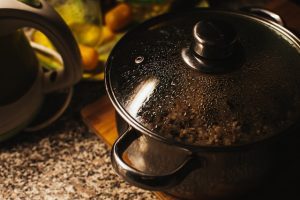
best bone broth made in a slow cooker
Comparison Table: Bone Broth vs. Other Keto-Friendly Foods
| Bone Broth | Other Keto-Friendly Foods | |
| Carbohydrate Content | Low in carbs and sugar, making it suitable for the keto diet. | Carbohydrate content varies depending on the specific food item. Some keto-friendly foods may contain higher carb levels. |
| Electrolyte Balance | Rich in essential electrolytes like sodium, potassium, and magnesium, which can support electrolyte balance during ketosis. | Electrolyte content varies among different keto-friendly foods. |
| Satiety and Weight Loss | High protein content promotes satiety and can aid in weight loss efforts. | Other keto-friendly foods may have different macronutrient profiles and may not provide the same satiety benefits. |
| Gut Health Support | Contains gelatine and amino acids that support gut health and aid in digestion. | Not all keto-friendly foods offer the same gut-supporting properties. |
| Collagen Intake | Provides a good source of collagen, which is beneficial for joint health, skin elasticity, and tissue repair. | Collagen content may vary among different keto-friendly foods. |
When compared to other keto-friendly foods, bone broth stands out for its low carbohydrate content, electrolyte support, satiety-promoting properties, gut health benefits, and collagen intake. While there are many foods that can fit into a keto diet, bone broth offers unique advantages that specifically complement this eating plan.
Incorporating bone broth into your keto diet can enhance your nutrient intake, support your overall well-being, and contribute to your success on this low-carb lifestyle. Whether sipped on its own, used as a base for soups and stews, or incorporated into various recipes, bone broth is a valuable addition to the keto diet.

how to make the best bone broth in a slow cooker
Choosing the Right Ingredients
To make a flavourful and nutritious bone broth, it is crucial to start with high-quality ingredients. Here are the key components you will need:
- Bones: opt for organic, grass-fed bones such as beef marrow bones or chicken carcasses. These bones provide the best flavour and nutritional value.
- Aromatics: Enhance the taste of your broth with aromatic vegetables like onions, carrots, and celery.
- Herbs and Spices: Add depth to your broth with herbs like thyme, rosemary, and bay leaves. Additionally, spices like black peppercorns and turmeric can elevate the flavour.
- Apple Cider Vinegar: Including a small amount of apple cider vinegar helps extract the minerals from the bones effectively.
Preparation and Cooking Process
- Preparation: Rinse the bones under cold water to remove any impurities. Pre-cut larger bones to expose the marrow for better flavour extraction.
- Roasting (Optional): For a deeper flavour profile, you can roast the bones in the oven before adding them to the slow cooker. This step is not necessary but highly recommended.
- Slow Cooker Setup: Place the bones, aromatics, herbs, spices, and apple cider vinegar into the slow cooker. Fill it with enough water to cover all the ingredients.
- Cooking Time: Set the slow cooker to low heat and let the broth simmer for 24 to 48 hours. This long cooking time allows the flavours to meld and the nutrients to be released.
- Straining: Once the cooking time is complete, strain the broth through a fine-mesh sieve or cheesecloth to remove any impurities and solids.
- Cooling and Storage: Allow the broth to cool before transferring it into airtight containers. Refrigerate for up to 5 days or freeze for longer-term storage.
Slow Cooker Tips and Tricks
- Use a slow cooker with a removable insert for easier cleaning.
- Fill the slow cooker with enough water to cover the ingredients but not excessively, as it may overflow during cooking.
- If using beef bones, a combination of marrow and knuckle bones provides a good balance of flavour and nutrients.
- Avoid using excessive salt during the cooking process, as it can be added later according to taste.
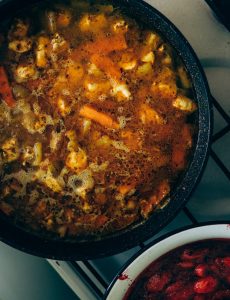
recipe for bone broth made in a slow cooker
Enhancing the Flavour
While bone broth is delicious on its own, you can experiment with various ingredients to enhance its flavour. Consider the following options:
- Roasted Vegetables: Roasting vegetables like onions, carrots, and garlic before adding them to the slow cooker intensifies their flavours.
- Dried Mushrooms: Adding dried mushrooms, such as shiitake or porcini, lends an earthy and umami-rich taste to the broth.
- Seaweed: Including a strip of dried seaweed, like kombu, adds depth and minerals to the broth.
Storing and Freezing Bone Broth
To preserve your bone broth for future use:
- Allow the broth to cool to room temperature.
- Pour it into airtight containers, leaving some space at the top for expansion during freezing.
- Label the containers with the date and contents for easy reference.
- Freeze the broth for up to 3 months.
Incorporating Bone Broth into Your Diet
Bone broth can be a versatile addition to your diet, providing both flavour and nutrition. Here are some ideas on how to incorporate bone broth into your meals:
- Sipping Broth: Enjoy a warm cup of bone broth as a nourishing and comforting drink. Sip it on its own or add some herbs and spices for added flavour.
- Soups and Stews: Use bone broth as a base for hearty soups, stews, and chili recipes. The rich flavour of the broth will enhance the overall taste of your dish.
- Grains and Legumes: Cook rice, quinoa, or lentils in bone broth instead of water to add richness and flavour. This method infuses the grains or legumes with the nutrients and depth of the broth.
- Sauces and Gravies: Substitute water or stock with bone broth when preparing sauces, gravies, or braises. The concentrated bone broth flavours of the broth will elevate the taste of your dishes.

why use a slow cooker for bone broth
Comparison Table: Homemade vs. Store-Bought Bone Broth
| Homemade Bone Broth | Store-Bought Bone Broth | |
| Quality Control | You have control over the ingredients and quality of bones used. | Quality and ingredient sources may vary. Read labels carefully. |
| Customization | You can adjust the flavour and seasonings to your preference. | Limited customization options. |
| Cost | Generally, more cost-effective, especially if using leftover bones. | May be more expensive, depending on the brand and quality. |
| Freshness | Made fresh at home, ensuring maximum freshness. | May be shelf-stable or frozen. Check expiration dates. |
When it comes to choosing between homemade and store-bought bone broth, there are a few factors to consider. Making your own bone broth gives you control over the ingredients used and allows for customization based on your preferences. It is generally more cost-effective, especially if you use leftover bones from other meals. Homemade bone broth is also fresher since you make it fresh at home.
On the other hand, store-bought bone broth offers convenience and saves you time in the kitchen. However, the quality and ingredient sources may vary between brands, so it's important to read labels carefully. Additionally, store-bought bone broth may be more expensive, depending on the brand and quality. Shelf-stable or frozen options are available, but always check expiration dates to ensure freshness.
Incorporating bone broth into your diet not only adds a flavourful element to your meals but also provides essential nutrients. Whether you choose to make your own or opt for store-bought, bone broth is a valuable addition to a healthy and keto-friendly eating plan.
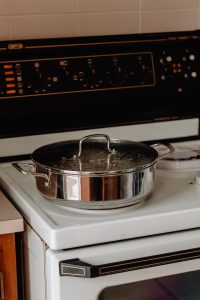
can you make good home made bone broth in a slow cooker
How to make sure your bone broth is keto friendly?
Bone broth is a nutritious and flavourful beverage that has gained popularity, especially among those following a ketogenic diet. Packed with essential nutrients and collagen, bone broth provides numerous health benefits while being low in carbohydrates. However, it's crucial to ensure that your bone broth is keto-friendly and aligns with your dietary goals. In this article, we will explore the key steps to make sure your bone broth is keto-friendly.
Use High-Quality Bones
When making bone broth, it's important to start with high-quality bones. opt for grass-fed, organic, and pasture-raised animal bones whenever possible. These bones tend to have a better nutrient profile and contain fewer potential toxins or harmful substances.
Include Low-Carb Vegetables and Herbs
To add flavour and additional nutrients to your bone broth, include low-carb vegetables and herbs. Some suitable options include celery, onion, garlic, bay leaves, thyme, and parsley. These ingredients enhance the taste without significantly increasing the carbohydrate content.
Avoid Starchy Vegetables
While vegetables can be included in bone broth, it's important to avoid starchy vegetables such as potatoes, carrots, and parsnips. These vegetables are higher in carbohydrates and can elevate the carb content of your broth, making it less keto-friendly.
Simmer for an Extended Period
To extract maximum flavour and nutrients from the bones, simmer your broth for an extended period. Ideally, simmer the bones for 24-48 hours. This extended cooking time helps release collagen, gelatine, and minerals from the bones, resulting in a more nutrient-dense broth.
Skim Off Excess Fat
Bone broth often contains a layer of fat on the surface. While fat is beneficial on a ketogenic diet, excessive fat in your bone broth might not be desirable for everyone. Skim off the excess fat if you prefer a leaner broth. However, leaving some fat can enhance the flavour and mouthfeel of the broth.
Consider Adding MCT Oil or Coconut Oil
If you want to increase the fat content of your bone broth, consider adding keto-friendly fats like MCT oil or coconut oil. These fats are easily metabolized into ketones and can enhance the ketogenic properties of your broth. Start with a small amount and adjust according to your taste preferences.

why make bone broth at home in a slow cooker
Comparison Table: Homemade vs. Store-Bought Bone Broth
| Homemade Bone Broth | Store-Bought Bone Broth | |
| Quality Control | You have control over the ingredients and quality of bones used. | Quality and ingredient sources may vary. Read labels carefully. |
| Customization | You can adjust the flavour and seasonings to your preference. | Limited customization options. |
| Cost | Generally, more cost-effective, especially if using leftover bones. | May be more expensive, depending on the brand and quality. |
| Freshness | Made fresh at home, ensuring maximum freshness. | May be shelf-stable or frozen. Check expiration dates. |
By following these steps and being mindful of your ingredients, you can ensure that your bone broth is keto-friendly. Enjoy its many health benefits while staying in line with your ketogenic lifestyle.
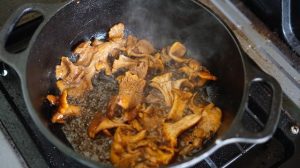
you can make your own bone broth in a slow cooker
What Type of Bones are Best for Keto Bone Broth Recipes?
When it comes to making keto bone broth, choosing the right type of bones is crucial for achieving a flavourful and nutritious result. Different types of bones provide varying levels of collagen, minerals, and gelatine, which are essential components of a quality bone broth. Here's a guide to help you select the best bones for your keto bone broth recipes:
- Beef Bones: Beef bones, such as marrow bones, knuckle bones, or oxtail, are commonly used for making hearty and flavourful bone broth. These bones are rich in collagen and gelatine, which contribute to the thick and satisfying texture of the broth.
- Chicken or Turkey Bones: Chicken or turkey carcasses and leftover bones are excellent choices for poultry-based bone broth. These bones are high in collagen and yield a lighter, milder broth compared to beef bones. Adding chicken feet can further enhance the gelatine content of the broth.
- Fish Bones: Fish bones, including the head and backbone, are ideal for making light and delicate fish broth. While fish broth may not contain as much collagen as beef or poultry broth, it is still a nutritious option and provides a distinct flavour profile.
- Pork Bones: Pork bones, such as pork hocks or neck bones, can be used to create a rich and flavourful bone broth. They contain a good amount of collagen and fat, which contribute to the richness and mouthfeel of the broth.
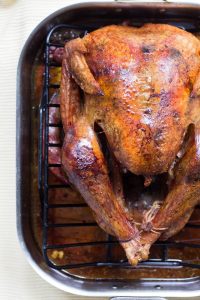
making chicken bone broth in a slow cooker
Comparison Table: Best Bones for Keto Bone Broth
| Beef Bones | Chicken or Turkey Bones | Fish Bones | Pork Bones | |
| Collagen Content | High | High | Moderate | Moderate |
| Gelatine Content | High | Moderate | Low | Moderate |
| Flavour Profile | Rich and robust | Mild and light | Delicate | Rich and savoury |
Each type of bone brings unique characteristics to your keto bone broth recipes. Beef bones provide a rich and robust flavour profile, while chicken or turkey bones offer a milder and lighter taste. Fish bones create a delicate broth with subtle seafood notes, and pork bones contribute to a rich and savoury flavour.
When selecting bones for your keto bone broth, it's important to prioritize high-quality sources. Look for grass-fed beef, pasture-raised poultry, wild-caught fish, and organic pork to ensure the best nutrient profile and minimize exposure to toxins or antibiotics.
Remember to include a mix of bones with some meat and connective tissue for optimal collagen extraction. You can also enhance the flavour of your bone broth by adding aromatic vegetables, herbs, and spices.
By choosing the right bones for your keto bone broth recipes and allowing for a long, slow simmering process, you can create a nutrient-dense and delicious broth that aligns with your ketogenic lifestyle.
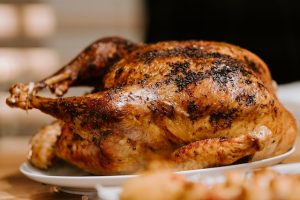
making keto bone broth in a slow cooker
How to Freeze dry Homemade Bone Broth
Freeze drying is an excellent method for preserving homemade bone broth while retaining its nutritional value and flavour. By removing moisture from the broth, freeze drying extends its shelf life and allows for convenient storage. Here's a step-by-step guide on how to freeze dry your homemade bone broth:
- Prepare the Bone Broth: Start by making a batch of homemade bone broth using your preferred recipe. Simmer the bones, vegetables, and herbs for an extended period to extract the maximum flavour and nutrients.
- Cool the Broth: Allow the bone broth to cool completely before transferring it to the freezer drying containers. This helps prevent condensation during the freezing process.
- Choose Freezer Drying Containers: Select freezer-safe containers or trays that are suitable for freeze drying. Ideally, opt for containers that are shallow and have a wide surface area. This allows for quicker freezing and drying.
- Pour the Broth into Containers: Pour the cooled bone broth into the chosen containers, leaving some space at the top to account for expansion during freezing. Ensure the containers are tightly sealed to prevent air exposure.
- Place in the Freezer: Put the filled containers in the freezer and allow them to freeze completely. This usually takes several hours or overnight, depending on the size and thickness of the broth.
- Transfer to the Freeze Dryer: Once the bone broth is completely frozen, transfer the containers to a freeze dryer. Follow the manufacturer's instructions for setting up the freeze dryer and operating it correctly.
- Initiate Freeze Drying: Start the freeze-drying process according to the specific instructions provided with your freeze dryer. The machine will gradually remove moisture from the bone broth while maintaining its temperature. You can buy freeze dried bone broth here.
- Monitor the Process: Keep an eye on the freeze-drying process and make sure everything is running smoothly. The duration of the freeze-drying process will depend on various factors, including the size and thickness of the broth.
- Store the Freeze-Dried Bone Broth: Once the freeze-drying process is complete, remove the bone broth from the freeze dryer. Transfer it to airtight, moisture-proof containers or vacuum-seal it for optimal storage. Label the containers with the date and contents.

make bone broth with chicken wings in a slow cooker
Comparison Table: Freeze-Dried vs. Traditional Homemade Bone Broth
| Freeze-Dried Bone Broth | Traditional Homemade Bone Broth | |
| Shelf Life | Extended shelf life due to low moisture content. | Shorter shelf life and requires refrigeration or freezing. |
| Convenience | Lightweight and easy to store and transport. | Bulkier and requires more space for storage. |
| Retained Nutrients | Retains nutrients, flavours, and aromas through freeze drying. | Nutrient loss may occur over time or during prolonged storage. |
| Rehydration | Rehydrates easily with hot water. | Requires simmering or boiling to restore consistency. |
Freeze-drying your homemade bone broth offers several advantages compared to traditional methods. The freeze-dried bone broth has an extended shelf life due to its low moisture content, allowing you to store it for a more extended period without the need for refrigeration. It is also lightweight and convenient to store and transport, making it an excellent option for camping, hiking, or emergency preparedness.
Furthermore, freeze-drying helps retain the nutrients, flavours, and aromas of the bone broth. Rehydrating the freeze-dried broth is quick and easy, requiring only hot water to restore its original consistency.
In conclusion, freeze-drying your homemade bone broth is a practical and efficient way to preserve it while maintaining its quality. By following the steps outlined above, you can enjoy the benefits of homemade bone broth for an extended period, with the added
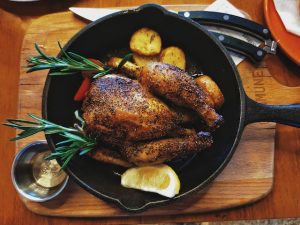
making beef bone broth in a slow cooker
Conclusion
Making bone broth in a slow cooker is a simple and convenient way to unlock its nutritional benefits and savour its robust flavours. By following the outlined steps, you can create a nourishing broth that can be enjoyed on its own or incorporated into various recipes. Experiment with different ingredients and find your favourite combinations to personalize your bone broth. Start brewing your batch of homemade bone broth today and savour the goodness it brings to your health and culinary creations.

how do you make a good bone broth in a slow cooker
Frequently Asked Questions (FAQs) - Making Bone Broth in a Pressure Cooker:
Got questions about making bone broth in a pressure cooker? Look no further! In this section, we address common queries and provide expert answers to help you navigate the process of creating delicious and nutritious bone broth using a pressure cooker.
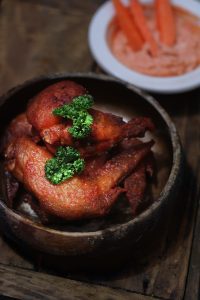
best bone broth recipes for a slow cooker
Can I reuse the bones for another batch of bone broth?
Yes, you can reuse the bones once or twice to extract more flavour and nutrients. However, keep in mind that subsequent batches may have a milder taste.
Can I add salt and seasonings during the cooking process?
It's best to avoid adding salt and seasonings during the initial cooking process. You can add them later when using the broth in recipes, ensuring optimal seasoning for each dish.
How long can I store bone broth in the freezer?
Bone broth can be stored in the freezer for up to 3 months. Make sure to label the containers with the date to keep track of their freshness
Can I use a pressure cooker instead of a slow cooker?
Yes, a pressure cooker can be used to make bone broth more quickly. However, the slow cooking process in a slow cooker often yields a richer flavour and better extraction of nutrients.
Is bone broth suitable for vegetarians or vegans?
Bone broth is made from animal bones and is not suitable for vegetarians or vegans. However, there are alternative vegetable-based broths available that can provide similar nutritional benefits.
Amazon and the Amazon logo are trademarks of Amazon.com, Inc, or its affiliates.






